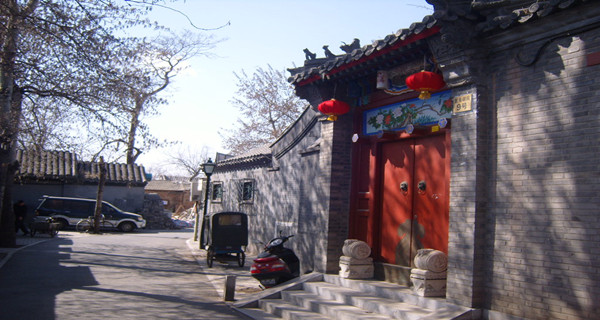1. Relation of Hutong & Siheyuan.
The words Hutong and Siheyuan are inseparable. On one hand, Hutong refers to the alley formed by two lines of Siheyuan, the Chinese name for Old Beijing residences, a kind of courtyard house. In the other hand, Hutong covers the general meaning of a neighborhood consisting of these alleys made up of Siheyuan buildings.
2. Notice that common people’s courtyard houses are different from those ones for tourist purposes.
The tourist courtyards are usually the former residences of ancient public figures, so they are spacious, well designed and beautiful while the common ones living by local people are generally one-room family houses (subdivided and shared by many households), cramped, one-storey with a tiny shed-like kitchen-conversion and often no private toilet, and the living conditions are basic at best. This is why a hutong has almost a rustic feel.

3. Recommended hutong areas.
Most of hutong residences were demolished due to the rapid modern development of the city, but some are relatively well preserved and protected. There are 4 most popular areas, including the Houhai hutong area, Nanluoguxiang hutong area, Dazhalan hutong area just south of Tiananmen Square, and the hutong area just north of the Forbidden City and immediately northeast of Jingshan Park.
4. Three good ways to wander around hutong: on foot, bicycle, and rickshaw/pedicab.
The famous Hutongs are located in the city center area, and most of the hotels, subway stations nearby offer bike rental service; also you are able to rent a bicycle right in the hutong area. Rickshaw rides around the hutong areas have long been a popular attraction. The Chinese style must be fresh for you, so very interesting. But remember to find a normal driver who is often certain uniformed and whose vehicle is hanging with a license plate.
Source: beijinghutongtour.com



